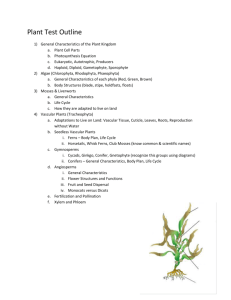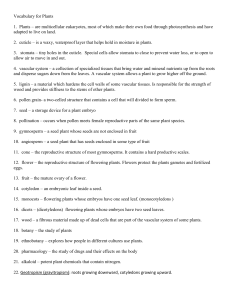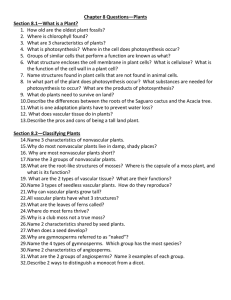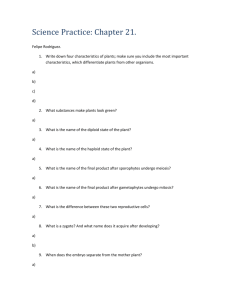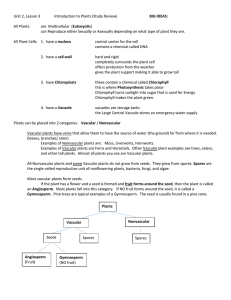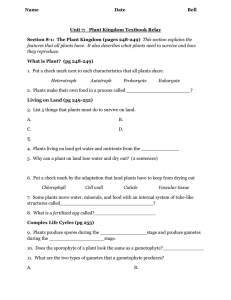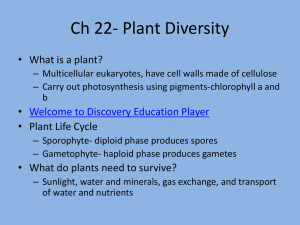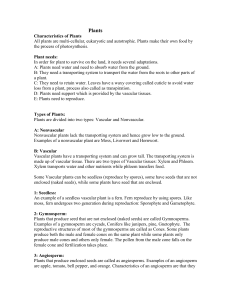plant exam review sheet - Hicksville Public Schools / Homepage
advertisement
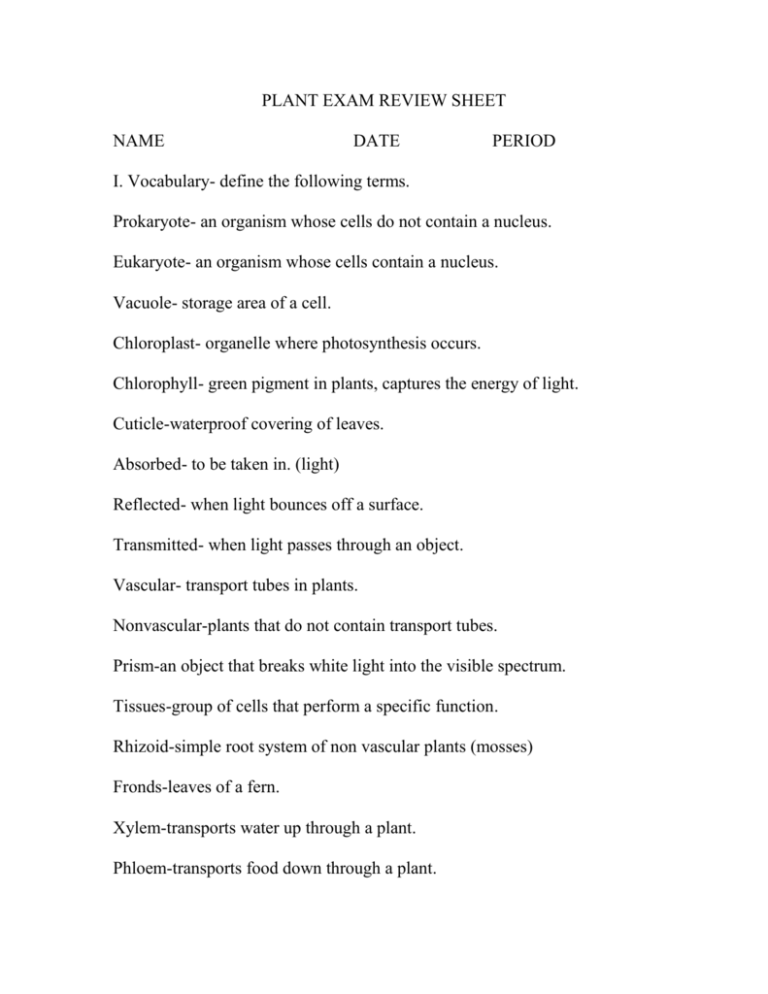
PLANT EXAM REVIEW SHEET NAME DATE PERIOD I. Vocabulary- define the following terms. Prokaryote- an organism whose cells do not contain a nucleus. Eukaryote- an organism whose cells contain a nucleus. Vacuole- storage area of a cell. Chloroplast- organelle where photosynthesis occurs. Chlorophyll- green pigment in plants, captures the energy of light. Cuticle-waterproof covering of leaves. Absorbed- to be taken in. (light) Reflected- when light bounces off a surface. Transmitted- when light passes through an object. Vascular- transport tubes in plants. Nonvascular-plants that do not contain transport tubes. Prism-an object that breaks white light into the visible spectrum. Tissues-group of cells that perform a specific function. Rhizoid-simple root system of non vascular plants (mosses) Fronds-leaves of a fern. Xylem-transports water up through a plant. Phloem-transports food down through a plant. Pistil-female reproductive structure of a flower. Stamen-male reproductive part of a flower. Pollination- transfer of pollen from male to female reproductive structures. Germination- the spouting of a seed. (occurs when the seed absorbs water) Stomata- opening in a leaf that gasses pass in and out of. Root hairs-help a plant absorb water and minerals. Dormancy- a period when an organisms growth or activity stops. II. REVIEW QUESTIONS: 1. Photosynthesis: - What does it produce?- sugar (glucose) and oxygen - What part of a plant cell does it take place in? - chloroplast -Where does the energy come from? The sun (light) - What are the necessary raw materials? Carbon dioxide and water 2. What is the most abundant pigment in leaves? Chlorophyll, which reflects green light. 3. Why can black clothing feel to warm on a hot day? – dark colors absorb more light. 4. How do ferns and mosses differ? Ferns have vascular tissue. 5. Why must ferns live in moist environments? So that egg and sperm cells can join. 6. What are three characteristics of stems? Transport materials, support the leaves and sometimes store food. 7. What are three characteristics of roots? Absorb water and minerals, anchor the plant, and sometimes store food. 8. What are the two stages of a plants life cycle? Sporophyte and gametophyte 9. What are the three parts of a seed? Seed coat, cotyledon and embryo. 10. What advantages do plants that produce seeds have over seedless plants? They are able to grow in relatively dry environments. 11. What part of a woody stem forms rings that tell a tree’s age? Xylem 12. What characteristics do all plants share? Eukaryotic multicellular and autotrophic. 13. What characteristic do all gymnosperms share? Produce naked seeds (no fruit) 14. What is the reproductive structure of a gymnosperm? Cones. 15. How are angiosperms different from gymnosperms? Produce flowers and fruit. 16. Why would plant growers add extra carbon dioxide to a greenhouse? Plants use carbon dioxide to make sugar, with more carbon dioxide they may be able to make more food and grow more. 17. If you observe a tall plant, is it vascular or nonvascular? Explain why. It would have to be a vascular plant since nonvascular plants do not have enough support to grow tall while vascular plants do. 18. If a plant produces a tasty, nutritious fruit how does this help the species survive? If the fruit is eaten by an animal it helps to disperse the seeds to new areas.
